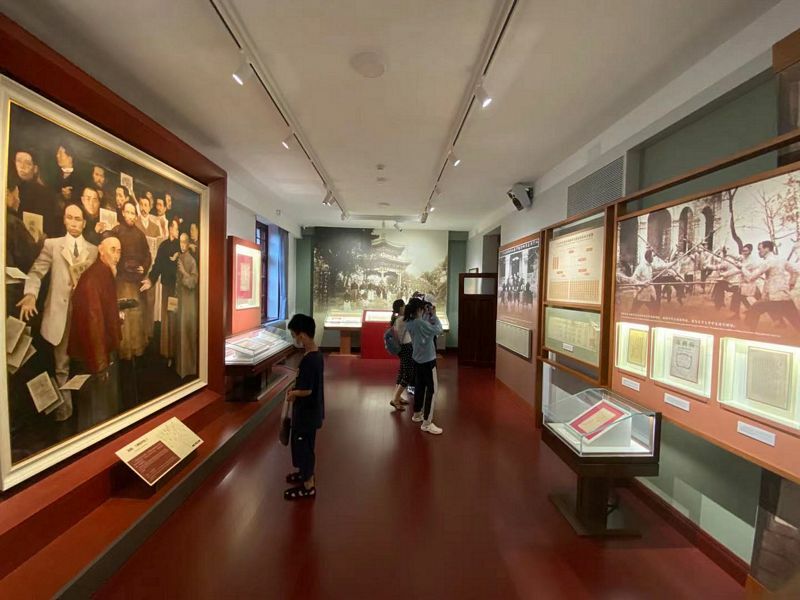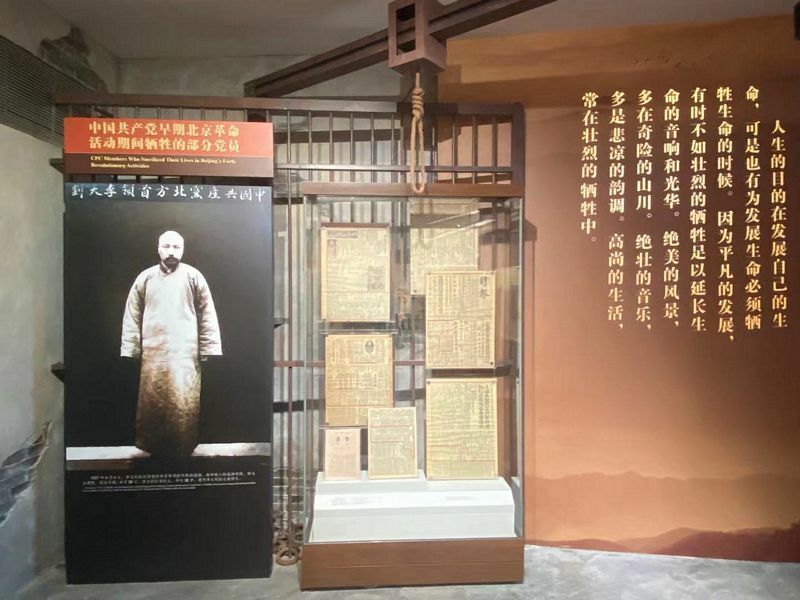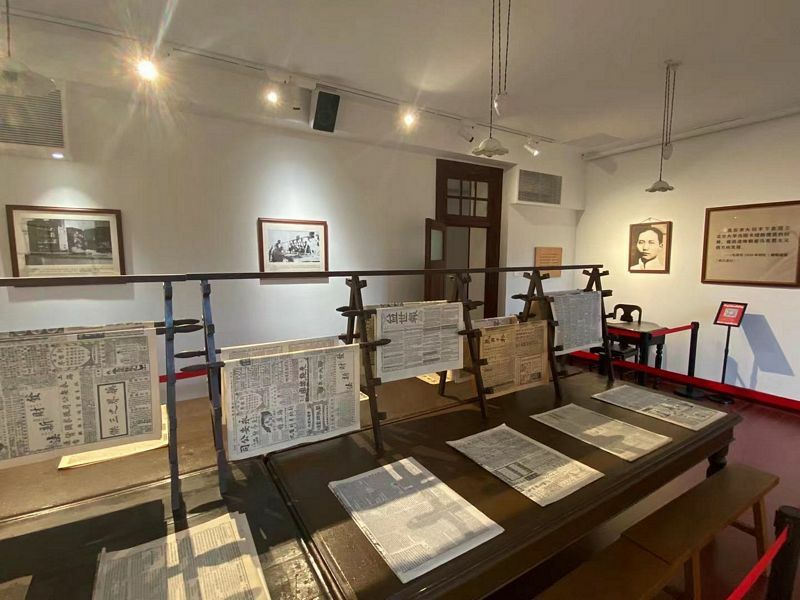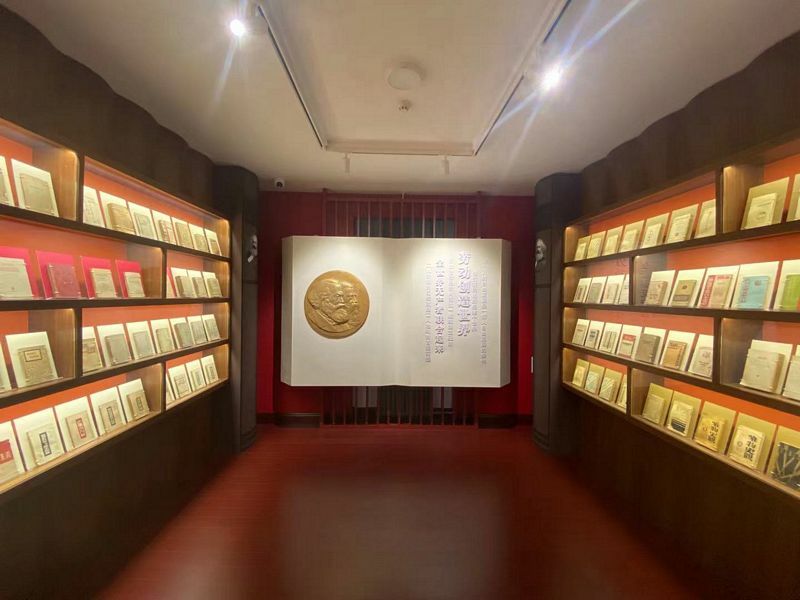May the Fourth (Movement) be with you!
The New Culture Movement Memorial of Beijing
Location: 29 Wusi Street, Dongcheng District, Beijing. Nearest subway station is National Art Museum Station (around 400m to the east)
Opening: 09:00 – 16:30 Tues – Sun (closed on Mondays)
Cost: Free (bring passport or photo ID and register ahead of time using WeChat – not very convenient for those not already living in China!)

The New Culture Movement Memorial of Beijing, more commonly known as the ‘Red Building’ is the former site of Peking University’s main campus. A very attractive European style red brick structure built originally in 1918 as the university modernised in the early Republic period of China. This site is of crucial historical importance for the Communist Party of China due to being the intellectual hotbed from where two key movements sprung forth: the New Culture Movement, and the May Fourth Movement.
The Red Building has been used as an exhibition for these political crusades for some time, but after a lengthy renovation, it officially opened again at the end of June 2021, in time to mark the centenary of the Chinese Communist Party, which owes its origins to these campaigns, as such this is very much the cradle of Chinese socialism, and therefore a very popular place for Party Members, school groups, and the generally curious members of the public to pay a visit to.
One of the only museums I have had to make a booking to visit, there is currently a limit of 1000 people per day and most days seem to be full. Even on a very rainy Thursday morning in Beijing there were a considerable number of people in attendance (fewer than when I had attempted to go before as the sun shone though, which is understandable).
The building is structurally as it has been for more than a century – a three storey structure with two wings spreading from a central staircase. Each floor of each wing has smaller rooms on each side of a corridor and as such popping into every single exhibition and room (as I did) involves stepping in and out of nearly sixty rooms in total, difficult for the social distancing that the dozens of local staff on hand request (stay 1m away from everyone? Hard to do when the corridor is barely 2m wide, and some of the rooms are very small indeed), and repetitive in the extreme, but for anyone actually with a deep interest in the key foundational events of today’s China this is ground zero, and worth spending the time to learn as much as possible.

Information here is displayed in various forms; with some reconstructions of key buildings and sites, some models, a few statues, paintings, reproduced photos, a gallows (!), and much more. Most of the exhibits are labelled in English as well as Chinese, but there is a degree of prior knowledge assumed that anyone new to the New Culture Movement and May Fourth Movement perhaps doesn’t have. So, if you’re a neophyte then do some reading in advance!
In brief though, the New Culture Movement was an intellectual-led effort to reform Chinese culture from the classical ideas and out-of-date concepts that many believed were holding the country back at the start of the 20th Century. With Chinese learning still devoted to complex archaic official language and models, Confucianism, and all manner of other restrictions that held back the real world benefits of advanced education a cohort of the leading minds in the country led efforts to reform and update the system. Held back by thousands of years of tradition, an innate conservatism in the ruling class, but galvanised by the changing political landscape as old monoliths were being swept aside as the imperial system crumbled and the Republic Of China and the Warlord Era began.
The New Culture Movement morphed into the May Fourth Movement (they are very much interlinked, to the point that many simply use the May 4th designation to refer to them both, plus the dramatis personae are mostly the same folks).
May 4th 1919, was a date on which student protests erupted in Beijing, in reaction to the failure of China to get any kind of fair treatment in the post-WW1 Treaty of Versailles, which handed Germany territory in China to the Japanese rather than back to China. This was the genesis but the complaints were broader and more disparate than simply complaining about this humiliation: a general anti-feudalism, anti-establishment, anti-foreign wave flowed through the radical youth and progressive intellectuals of China, and erupted in these protests, which were, of course, suppressed.
However, they drew popular support from merchants, workers, and many other groups. Strike action, disruptions of key industries and transportation routes, and widespread sympathy with the aims of the students gave the movement some success in protesting the government’s weakness. The principal of the Peking University, Cai Yuanping (whose office is included in any visit to the Red Building now) resigned in protest on May 9th 1919, and many of the other senior leaders went on to become the founders of the Chinese Communist Party just two years later.

Anyway, as I write above, this complex and crucial period of history deserves further study that can be summarised in a simple blog, but a bit of prior understanding is useful to know just who all the people mentioned in the exhibits at The New Culture Movement Memorial of Beijing are, and what they actually did and thought.
The Red Building as a museum is divided into six main parts. Confusingly spread across the floors in a non-instinctual way, so pay attention to the people directing visitors which way to go!
Part I is titled The Working Class Stepped onto the Stage of History after Failed Attempts by Various Forces to Save the Nation from Subjugation in Modern Times (I have to think there is a more succinct way of putting this!) and introduces but to the main players, what the movements were actually about, the complaints made about China’s constant humiliation at the hands of overseas powers, and so on. It would be possible to just pop in and see these rooms to get a basic idea of what is going on, if your time is very limited.
Part II, Awaken the Nation and Build the Center of the New Culture Movement, explains how the higher educational establishment had modernised and brought new thinking to the mainstream of students, and the inevitability of clashes between the ossified structures of old China with the dynamism of the new. Students (including later PRC luminaries such as Zhou Enlai and Deng Xiaoping) picked up ideas from studying abroad, others who remained in China also dug deep into the new world of progressive thought (Mao Zedong’s ‘office’ – which is actually a desk in the newspaper reading room where he worked – can be visited here too).

Part III, Uphold Patriotism and Fuel the May Fourth Movement, leads us from New Culture into the more robust actions of the May 4th events themselves; marches, strikes, suppression, battles, martyrdom, and so on. This is perhaps the most interesting part in my opinion, with some action going on and the exhibits giving a good sense of the risks being taken by these radicals, as well as the necessity of many of their demands.
Part IV, Plant the Seeds of Revolution and Make Beijing a Main Hub for the Early Spread of Marxism in China, introduces us to some key overseas influences and players. Most notably this would be advisers and visitors from the newly-formed Soviet Union. There are a few displays of the works of Marx, Engels, Lenin, and so on in this museum and they demonstrate how these ideas, and commentaries on them by leading Chinese intellectuals, were taking hold among the literate sections of society in particular at that time. Various key figures heading to China from Russia are profiled, as well as those sent west for learning and ideas exchange.
Several rooms are dedicated to Li Dazhao, who was probably the main character in the movement at that time and is considered the first communist in China. A video of Li Speaking in Russia is shown, sadly with no sound, as well as efforts to show his key thoughts and influences (mainly in running and editing various journals, inspiring fellow thinkers, etc). The gallows mentioned earlier also relate to Li Dazhao, as he was captured by the warlord Zhang Zuolin (known as The Old Marshal) and executed a couple of years after the May 4th Movement. Becoming a martyr to the progressive cause. His former residence sits on the Museums of Beijing list as one to visit and review when it reopens after a very long covid-era closure.

Part V, Wide Spread of Marxism (a very modest title compared to the others!), demonstrates the ultimate successes of the ideas of the participants in both the New Culture Movement and the May Fourth Movement, as communism and its ideas spread across China. Of course, there was the whole matter of the struggle with Japan, the ongoing civil war (or rather multiple civil wars), to come before the final triumph of the forces led by these ideas, plus space exists (although not here) to question how classically Marxist the founding principles of the PRC and those that govern the country today actually are, but that’s another story for another place!
Finally, Part VI arrives, just a few rooms, titled Remain True to Our Original Aspiration and Keep Our Mission Firmly in Mind. This is the most skippable part really as it leaps decades ahead from the key events that happened in this very building to profile the paramount leaders of China since then (you know who they are, or should do at least!), The most interesting room in this part is the reading room where Mao Zedong used to work, otherwise I noticed my fellow visitors that day, many of them wearing badges identifying them as CCP members, skipping most of these rooms.
As mentioned above, many of the rooms and exhibits are rather small and cramped, but this is due to the Red Building not being a purpose-constructed museum, and instead being the actual location of much of what it is being exhibited and reported, and the offices and workplaces of many of the main participants. Some of the larger rooms are preserved (or rather, reconstructed) as they would have been at the time; lecture halls, offices, and a room for preparing May 4th protest banners (which was presumably not its actual usual purpose) and these are nicely done and are generally very interesting.

The Red Building is big though, and with a full complement of daily visitors would be crowded for sure. I spent over an hour and a half there and thought I was moving fast actually, plus I had the benefit of it not being very full at the time of my visit. For anyone with a deep interest and a need to read every caption and explanation at least two hours would be necessary.
There is no café (a pity, this would be a fine addition) but there is a decent souvenir shop next to the entrance, with tote bags, magnets, keyrings, and so on available. Notably missing from here is any literature providing a history of the building, a summary of the stories told, and so on. It's almost as if visitors are either expected to just remember everything or are not expected to be interested enough to read more about what went on.
So, while it may be a very famous site in Beijing, The New Culture Movement Memorial of Beijing is not likely to be somewhere the average first time tourist in the city puts on their must-visit list. This is understandable as it is somewhat niche and does take a while to get around. However, for anyone with an interest in early socialism, the path from the late dynastic period to the present day, or fans of the lovely architecture itself, the Red Building is a fine choice of place to visit. Much to learn, lots to see, and a confusing narrative to try to make some sense of – a strong recommendation to anyone with a passion for Chinese history or politics.
A short but handy video about the 2021 reopening of the New Culture Movement Memorial of Beijing/Red Building can be found here. Ideal to get a sense of what it is like and perhaps whet the appetite for more or put you off making a longer in-person visit!

